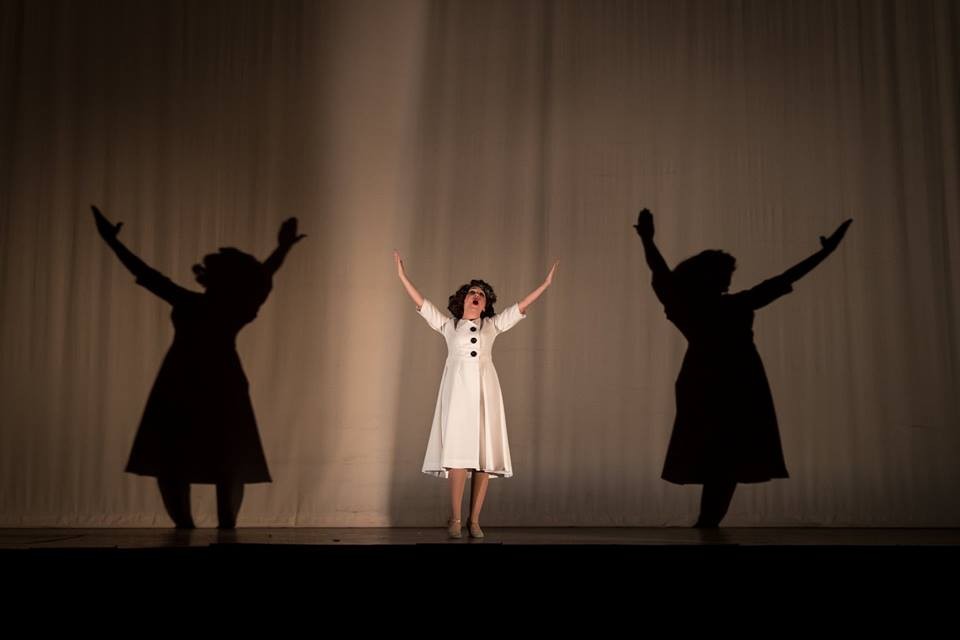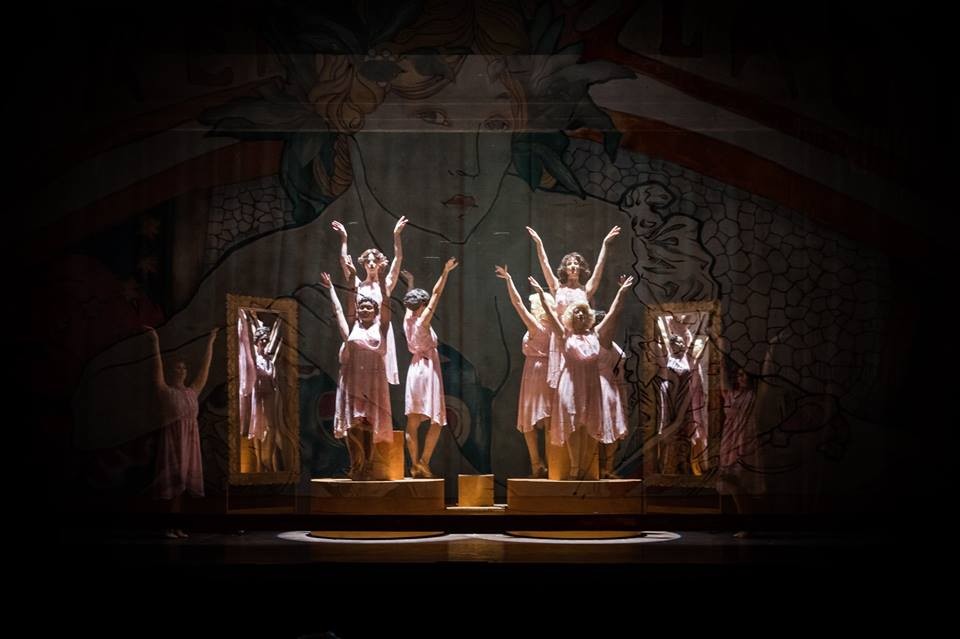
When spare is also full.
The stakes are lower than they might be, and character work could be more thorough. But Theatre Memphis’ production of 42nd Street — the vintage story of a (not that) shy young gal from Allentown, PA, who dances her way from the chorus to the center spotlight — is as refined as it is restrained, and effervescent as a New Year’s toast.
Shortly after New York’ Chrysler building opened in the spring of 1930 (becoming the textbook example of American Art Deco architecture), critic Kenneth Murchison described the skyscraper’s visionary architect William Van Alen as “the Ziegfeld of his profession.” This was a reference to theater impresario Florenz Ziegfeld whose fancy Follies had only just moved from the New Amsterdam Theatre, an Art Nouveau gem less than a mile’s stroll down 42nd Street from the shiny east Midtown tower.
Murchison’s comment may not have been an insult exactly, but the suggestion was certainly one of style over substance, and of the flashy and new vs. the tried and the true. This familiar cultural crossroads is the exact spot on our conceptual subway map where director Ann Marie Hall has set her production of 42nd Street, which is a cinema-inspired jukebox musical using songs popularized in the 1930s. Scenic environments, courtesy of designer Dave Nofsinger, are minimal — a series of curtains, frames, and backdrops with deco and nouveau flourishes that frame Amie Eoff’s swell costumes and the skilled hoofers who fill them. The production’s appropriate use of the unadorned theater space echoes Theatre Memphis’ recent production of Stage Kiss in a number of ways that should be fun for season ticket holders. They’re both the kind of meta, performer-forward production that leaves you thinking style and substance might be the same thing sometimes if there’s enough skill to back it up. Refreshing!

Lighting that shows us what to look at. Thanks lighting designer Jeremy Allen Fisher.
Omega level stage threat Gia Welch is typically splendid as Peggy, a pitch-in girl from Allentown, PA who steps into a diva’s dancing shoes to save the big show. That’s the kind of by the numbers 1930s-era plot this musical is built around. 1. Big-time producer Julian Marsh casts a big-time show. 2. Big-time producer Julian Marsh casts a big-time diva in the big-time show. 3. The big-time diva can’t dance and does diva stuff. 4. Small-town chorus girl steps up and saves the day while romance blossoms all around. 5. Tap, tap, tap.
There’s nothing to it, right? Well, you may very well think that till Welch demonstrates her hilarious speed tapping skills. That’s when the show’s reasons for being become self evident.
Carolyn Simpson’s Dorothy is never quite as spoiled or arch as the star attraction who can’t dance might be, but she’s committed and sets up a classic rivalry well enough. There are other fine supporting performances by stalwarts like Lindsay Roberts, John Hemphill, and Mary Buchignani. But this show celebrates the chorus and group effort, and that’s where Theatre Memphis’ production shimmies and shimmers.

Graceful ages.
The period songs are a joy. The dancing is top notch. This should be a perfectly delightful fantasy to escape into to dodge bad news and get out from under the summer’s oppressive heat. But I’ve got to confess, I was miserable. It wasn’t because someone’s phone went off or because someone else was texting or loudly unwrapping candy, or taking photos or doing anything on that annoying litany of annoying things we’re cautioned against during a standard pre-show speech. It’s because someone seated nearby had evidently baptized themselves in cologne before coming to the theater and it assaulted my eyes and sinus cavities like a fighting cock. Mercifully, this once-frequent offense is less common than it once was — almost endangered, praise be. So I’m not bringing this up to reflect negatively on Theatre Memphis or 42nd Street in any way. It’s an earnest plea from a regular audience member to the rest of the theatergoing community: Friends, don’t let friends overcologne.
With that off my chest, I really can’t push much further in the review because so much of my experience was colored by circumstance. I do remember peering through raw-rubbed eyes at a group of dancers in coral-pink dresses and becoming acutely aware of how nicely the fabric draped — how perfectly its movement complemented the movers. It’s not that these details aren’t present in busier shows. They just get lost in the business, and it’s so nice when they’re found again. Even nicer when it’s all wrapped up in an illuminated deco frame.